Dacia Spring VS Renault Espace – Specs, Efficiency & Price Comparison
Which model is the better choice – the Dacia Spring or the Renault Espace? We compare performance (65 HP vs 200 HP), boot capacity (308 L vs 692 L), efficiency (13.20 kWh vs 4.90 L), and of course, the price (14500 £ vs 37500 £).
Find out now which car fits your needs better!
The Dacia Spring (SUV) is powered by a Electric engine and comes with a Automatic transmission. In comparison, the Renault Espace (SUV) features a Full Hybrid engine and a Automatic gearbox.
When it comes to boot capacity, the Dacia Spring offers 308 L, while the Renault Espace provides 692 L – depending on what matters most to you. If you’re looking for more power, you’ll need to decide whether the 65 HP of the Dacia Spring or the 200 HP of the Renault Espace suits your needs better.
There are also differences in efficiency: 13.20 kWh vs 4.90 L. In terms of price, the Dacia Spring starts at 14500 £, while the Renault Espace is available from 37500 £.
Compare all the key specs now and find out which model fits your lifestyle best!
Dacia Spring
The Dacia Spring stands out as an affordable and environmentally friendly option in the electric vehicle market, combining practicality with a compact design ideal for urban settings. Its minimalist interior, while basic, provides all the essential features needed for a comfortable drive, reflecting its cost-effective approach. The vehicle's performance suits city driving, making it an appealing choice for those seeking an entry-level electric car.
details @ dacia-presse.de
@ dacia-presse.de
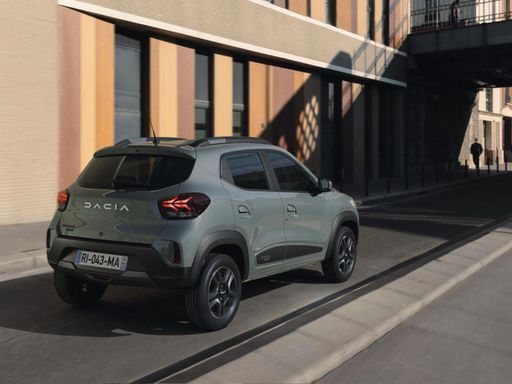 @ dacia-presse.de
@ dacia-presse.de
 @ dacia-presse.de
@ dacia-presse.de
Renault Espace
The Renault Espace is a testament to innovative design, combining versatility with comfort to offer a unique driving experience. Its sleek exterior is complemented by a spacious interior, designed to cater to the needs of families and adventurers alike. With advanced technology and a focus on safety, the Espace seamlessly blends practicality with modern sophistication, making it a standout choice in the MPV segment.
details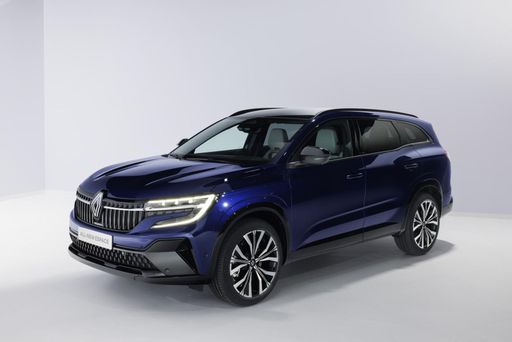 @ Renault
@ Renault
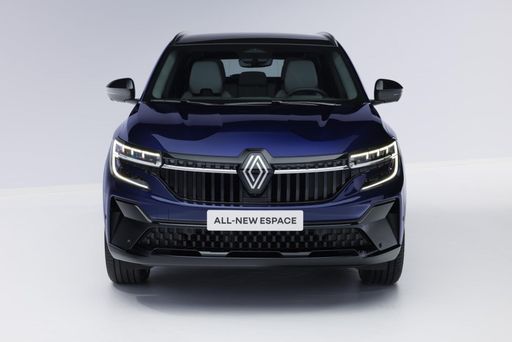 @ Renault
@ Renault
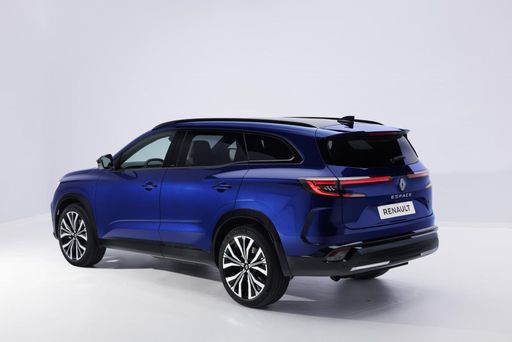 @ Renault
@ Renault
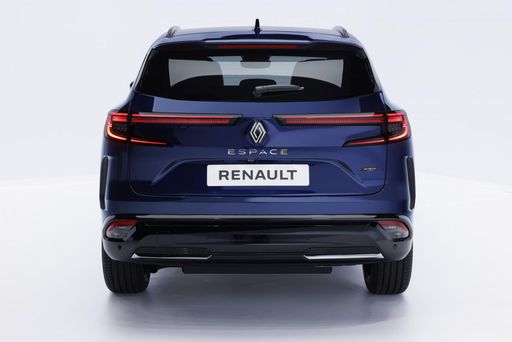 @ Renault
@ Renault
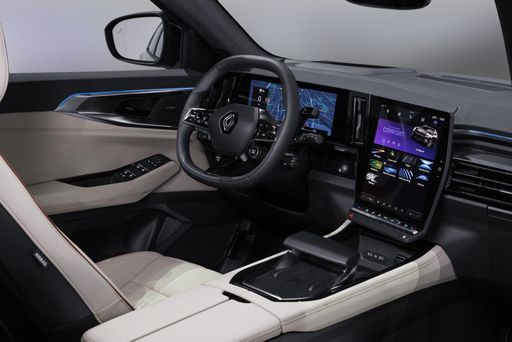 @ Renault
@ Renault

|

|
|
|
|
Costs and Consumption |
|
|---|---|
|
Price
14500 - 17100 £
|
Price
37500 - 41400 £
|
|
Consumption L/100km
-
|
Consumption L/100km
4.90 L
|
|
Consumption kWh/100km
13.2 - 14.1 kWh
|
Consumption kWh/100km
-
|
|
Electric Range
225 - 228 km
|
Electric Range
-
|
|
Battery Capacity
26.80 kWh
|
Battery Capacity
-
|
|
co2
0 g/km
|
co2
110 g/km
|
|
Fuel tank capacity
-
|
Fuel tank capacity
55 L
|
Dimensions and Body |
|
|---|---|
|
Body Type
SUV
|
Body Type
SUV
|
|
Seats
4
|
Seats
5 - 7
|
|
Doors
5
|
Doors
5
|
|
Curb weight
1013 - 1050 kg
|
Curb weight
1673 - 1783 kg
|
|
Trunk capacity
308 L
|
Trunk capacity
212 - 692 L
|
|
Length
3701 mm
|
Length
4746 mm
|
|
Width
1583 mm
|
Width
1830 mm
|
|
Height
1519 mm
|
Height
1645 mm
|
|
Payload
265 - 302 kg
|
Payload
404 - 581 kg
|
Engine and Performance |
|
|---|---|
|
Engine Type
Electric
|
Engine Type
Full Hybrid
|
|
Transmission
Automatic
|
Transmission
Automatic
|
|
Transmission Detail
-
|
Transmission Detail
Automatikgetriebe
|
|
Drive Type
Front-Wheel Drive
|
Drive Type
Front-Wheel Drive
|
|
Power HP
44 - 65 HP
|
Power HP
200 HP
|
|
Acceleration 0-100km/h
13.7 - 19.1 s
|
Acceleration 0-100km/h
8.80 s
|
|
Max Speed
125 km/h
|
Max Speed
174 km/h
|
|
Torque
113 - 125 Nm
|
Torque
-
|
|
Number of Cylinders
-
|
Number of Cylinders
3
|
|
Power kW
33 - 48 kW
|
Power kW
147 kW
|
|
Engine capacity
-
|
Engine capacity
1199 cm3
|
General |
|
|---|---|
|
Model Year
2024
|
Model Year
2025
|
|
CO2 Efficiency Class
A
|
CO2 Efficiency Class
C
|
|
Brand
Dacia
|
Brand
Renault
|
Dacia Spring
The Revolution of Affordable Electric Mobility: The Dacia Spring
The automotive world has witnessed remarkable advancements in electric vehicles (EVs), with the Dacia Spring emerging as a noteworthy contender in the affordable segment. Combining efficiency, affordability, and practicality, the Spring offers an intriguing prospect for eco-conscious individuals and city dwellers alike.
Powertrain and Performance: A Look Under the Hood
The Dacia Spring is equipped with an electric motor that delivers between 44 to 65 PS, translating into a versatile driving experience tailored to urban landscapes. It operates on a front-wheel-drive system, ensuring a familiar and manageable handling experience.
Dacia Spring's electric engine is paired with an automatic transmission, utilising a reduction gearbox. This setup allows for smooth acceleration and a top speed of 125 km/h, ensuring that everyday driving scenarios are handled with ease.
Efficiency and Range: Eco-Friendly without Compromise
Efficiency is a cornerstone of the Dacia Spring's design, boasting an energy consumption of just 13.2 to 14.1 kWh per 100 km. When fully charged, its 26.8 kWh battery offers a respectable range of 225 to 228 km, making it ideal for daily commutes and short trips.
Furthermore, the Spring takes pride in its commendable CO2-efficiency class A, emphasising its commitment to reducing environmental footprint with a zero-emission profile.
Design and Practicality: Compact yet Comprehensive
Lying in the SUV category, the Dacia Spring is compact with dimensions of 3701 mm in length and 1583 mm in width, making it a perfect match for urban environments where space is at a premium. Despite its modest size, it provides a generous boot space of 308 litres, ensuring practicality isn’t sacrificed.
Comfort and Interior: For the Everyday Journey
The Dacia Spring comfortably seats up to four passengers. The cabin offers a minimalist yet functional design, available in multiple trim lines including Essential, Expression, and Extreme, allowing customers to choose according to their taste and requirement.
With its ergonomic layout and simplicity, the interior is crafted to enhance the driving experience by focusing on essential needs, avoiding unnecessary distractions.
Affordability and Accessibility: Breaking Barrier
The Dacia Spring stands out in the electric vehicle market due to its affordability, with prices ranging from 16,900 to 19,900 €. This ensures that environmentally friendly transportation is accessible to a broader audience.
Additionally, the Spring allows for cost-effective maintenance and operational expenses, offering monthly running costs between 570 to 599 € and cost per km between 22.8 to 24 cents, making it an economical choice in the long run.
Final Thoughts: The Future of Urban Mobility
In summary, the Dacia Spring serves as a testament to how electric vehicles can be both affordable and practical, without compromising on essential features. Whether it is for the eco-conscious urbanite or those looking for a cost-effective daily driver, the Spring is positioned as a viable solution for navigating the future of urban mobility.
Renault Espace
A New Era for the Renault Espace
The Renault Espace, a staple in the automotive industry, has evolved to embrace a bold new direction with its latest iteration. With its transition into a sleek and stylish SUV, the Espace continues to offer the versatility and innovation that customers expect from the renowned French automaker. This article delves into the advanced technical details and groundbreaking innovations of the current Renault Espace model.
Powertrain Engineering: Full Hybrid Brilliance
The core of the latest Renault Espace is its sophisticated E-Tech Full Hybrid technology. At the heart of this system lies a dynamic three-cylinder engine paired with electric motor support, generating a robust 200 PS. This ensures that drivers experience both power and efficiency in their journeys. The hybrid engine achieves remarkable fuel economy, consuming just 4.7 L/100km, and demonstrates Renault’s commitment to environmental responsibility with a CO2 output of just 107 g/km, earning it a classification of CO2 efficiency class C.
Design and Dimensions: Spacious Comfort in an SUV Shell
Renault’s transformation of the Espace into an SUV doesn’t compromise on its title hinting towards ample interior space. With seating configurations for either five or seven passengers, the Espace adapts to diverse family needs. The SUV's dimensions—4,722 mm in length, 1,843 mm in width, and 1,645 mm in height—ensure that it stands out both aesthetically and functionally on the road.
The generous boot capacity ranges from 159 to 581 litres, allowing it to accommodate everything from daily groceries to larger travel luggage with ease. The five-door design further enhances its practicality, making the loading and unloading process a breeze.
Performance and Drivability: A Smooth Journey
The Renault Espace offers impressive performance metrics, accelerating from 0-100 km/h in a commendable 8.8 seconds. Despite its size, the Espace maintains a commendable top speed of 174 km/h, ensuring that it is as capable on highways as it is in an urban environment. The front-wheel drive system, paired with an automatic gearbox, provides a seamless driving experience—ideal for both city commutes and longer road trips.
Interior Comfort and Technology: A Hub of Innovation
Renault’s focus on creating a comfortable and technologically advanced cabin is evident in the Espace. The choice of various trims—Esprit Alpine Multi-Mode Automatik and Iconic Multi-Mode Automatik—offers luxury and personalisation. Modern technology is integrated throughout the vehicle, with intuitive infotainment options that keep all passengers connected and entertained.
Value for Money: A Competitive Edge
The Renault Espace positions itself competitively in the market with its starting price range from €43,800 to €48,300. Such pricing reflects its status as a premium vehicle that offers cutting-edge hybrid technology, elegant design, and versatile functionality.
With its blend of performance, technology, and space, the Renault Espace remains an outstanding option for families and individuals alike, looking to embrace innovative motoring in the SUV segment.
The prices and data displayed are estimates based on German list prices and may vary by country. This information is not legally binding.
